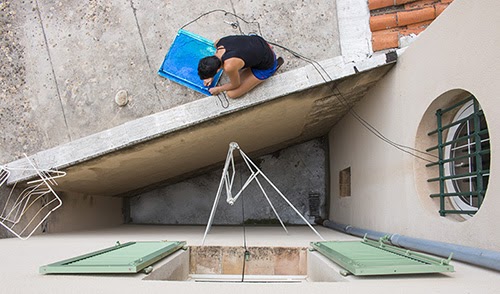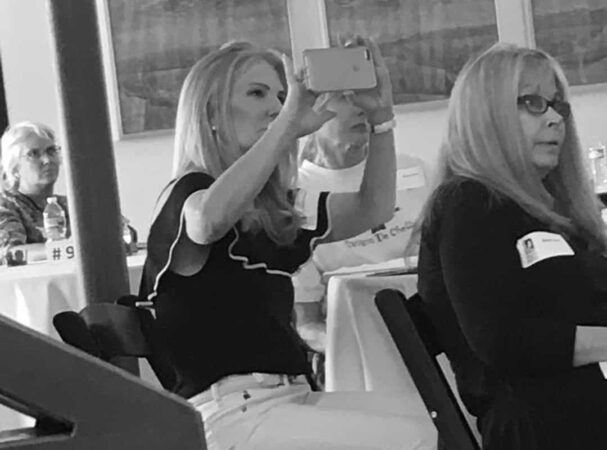Beauty can be found even in a garbage cart and an old crone picking at her ultimate tooth – A Gallery of Paintings by Clark Hulings
Casa Suecia, Clark Hulings 1968
I was walking home a few nights ago after dinner with a friend, and passed along the back of the Musuem of Modern Art on West 54th Street. It’s June so everything was bathed in soft, pre-twilight. As I passed I glimpsed the Museum’s beautiful courtyard ever so briefly through narrow slats, and then I continued on alongside its long, tall, concrete-take-on-corrugated tin-siding wall. And it hit me: how can such an important museum show only that to the world?
There was great fanfare when MoMA unveiled its remodeled plant just a few years ago. The New Yorkers living across the street couldn’t wait for the construction nightmare they had been living through to become a fantastic new iteration of one of the most important visual art museums in the world. How disappointed they must have been to discover their view would continue to be a blank wall, and how upset to know that now there was a lovely open space on the other side of it that was deliberately hidden.
Look at Me! Look at Me!
Non-decoration is not standard New York City behavior. We have two standards, generally: 1. Make something pretty and show it off, 2. Leave something ugly and let it be an eyesore. It’s not so common to make something pretty and then wall if off with an eyesore, especially when you’re in the business of exhibiting art. OK, some will take offense at my calling it an eyesore. I understand the minimalist architectural concept of MoMA, but is the gigantic grey wall really more beautiful than the courtyard it hides? In such an urban environment courtyards are coveted. Walls are everywhere.
What’s even stranger is that MoMA has left its wall plain in the middle of a public art renaissance. Block associations and neighborhood groups are working together with artists, local residents and businesses to place artwork in their open spaces – on sidewalks, in medians and intersections, on walls… Yes, it’s true that The City demolished the graffiti Mecca 5Pointz in 2014, to deafening outcry, but 5Pointz’ martyrdom has spurred many other art institutions in New York and elsewhere to celebrate graffiti and street art and their contributions to and influence on other genres.
Drawing a blank
Why would The Museum of Modern Art not seize the perfect opportunity to make a statement on a hot button topic at the center of its mission, using its own property as a canvas? It would be a big statement, because it’s a really big wall. Certain name brand muralists whose work lies in The Museum’s genre and style sweet spot would be perfect candidates to create something spectacular, if potentially political. But you have to assume the statement the artist would want to make could harmonize with one acceptable to The Museum. The opportunity would justify some compromise on theme. Failing that, I find it odd that The Museum would not use its real estate for marketing – showcase tantalizing tidbits of what’s on offer inside.
Sadly, MoMA’s grey wall on 54th Street stands as a testament to missed opportunities. And as I crossed Sixth Avenue and passed the Alliance Bernstein buildings fountains and flowers I realized that the biggest statement The Museum could possibly make is not to share it’s treasures, whether art or landscaping or just relief from the skyscrapers all around. The wall deliberately blocks the beauty within from everyone without an entry ticket.








